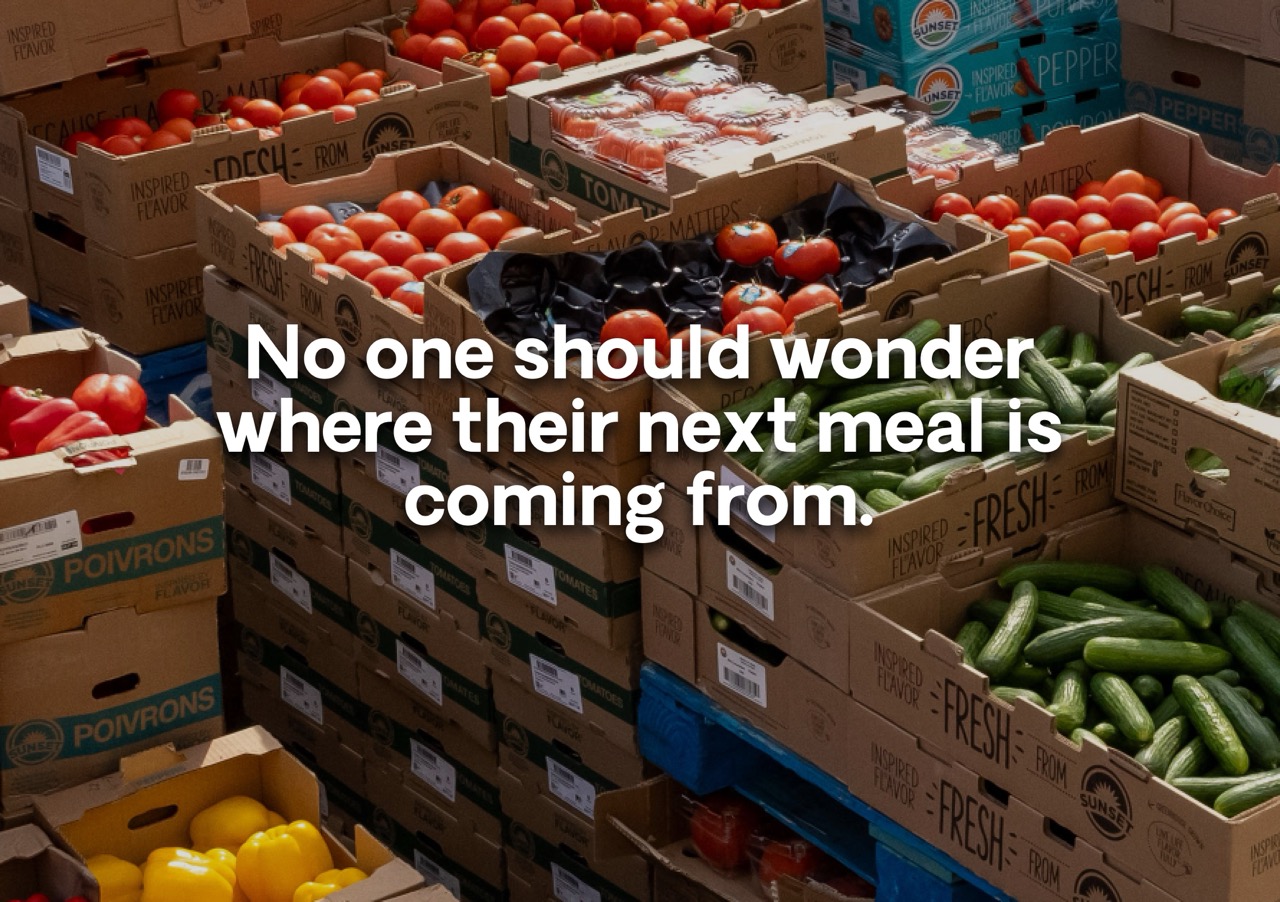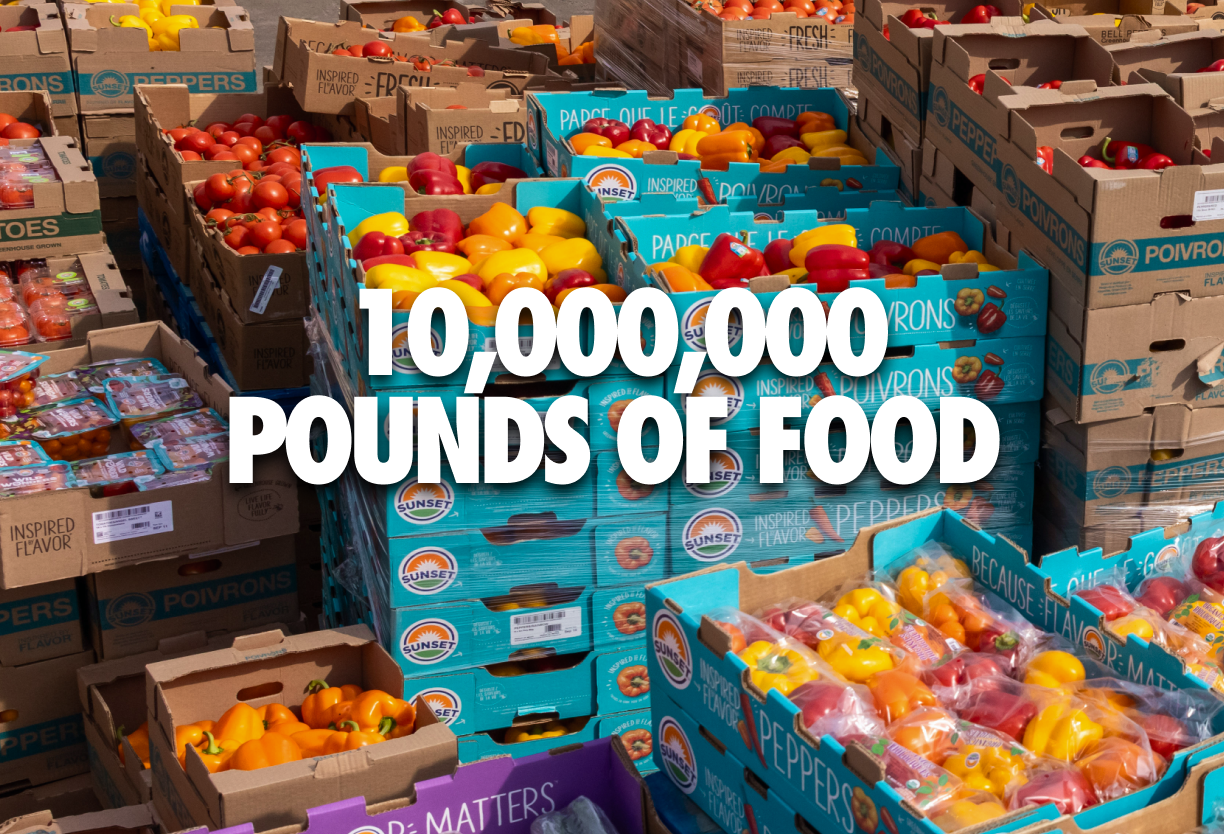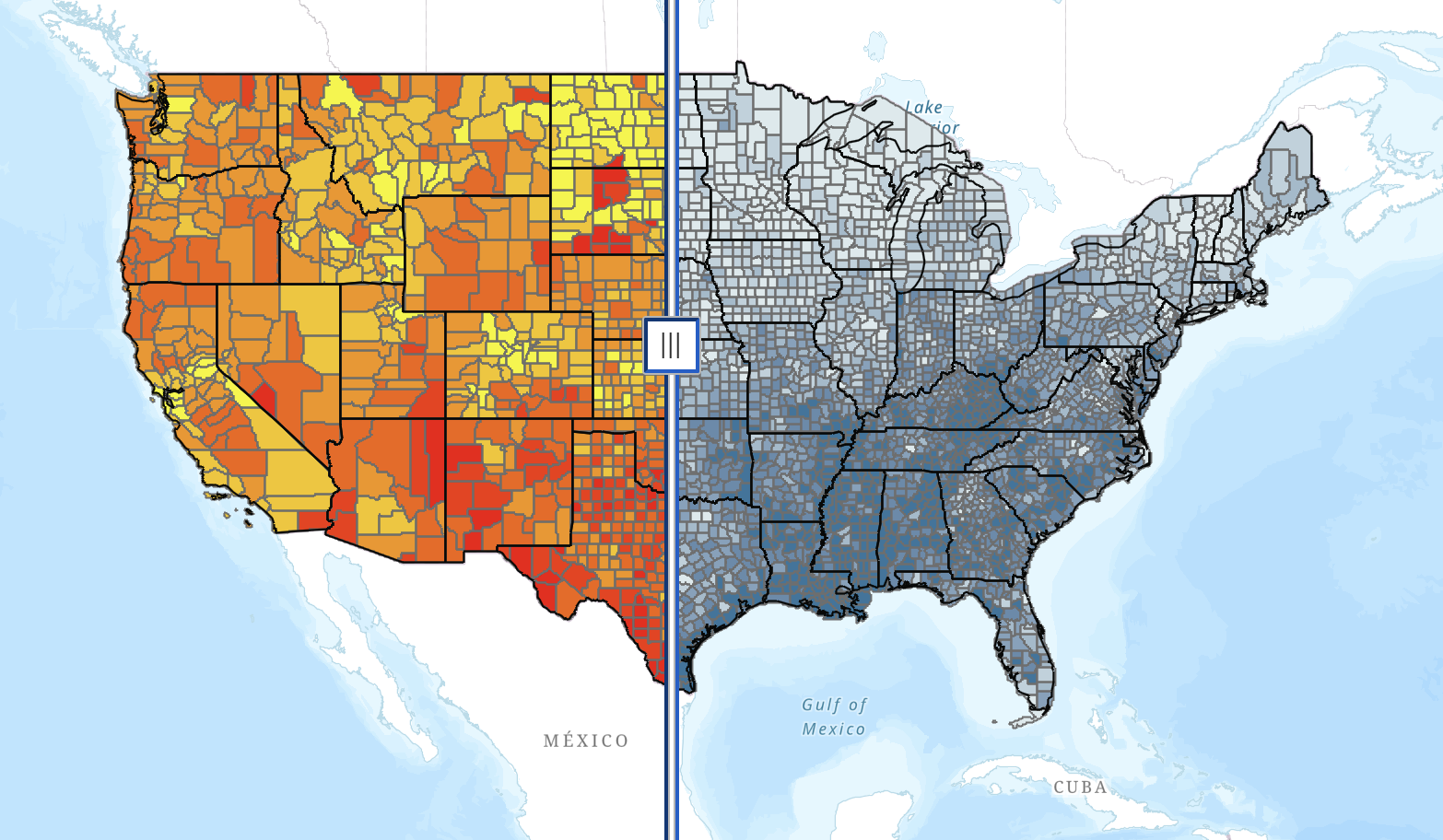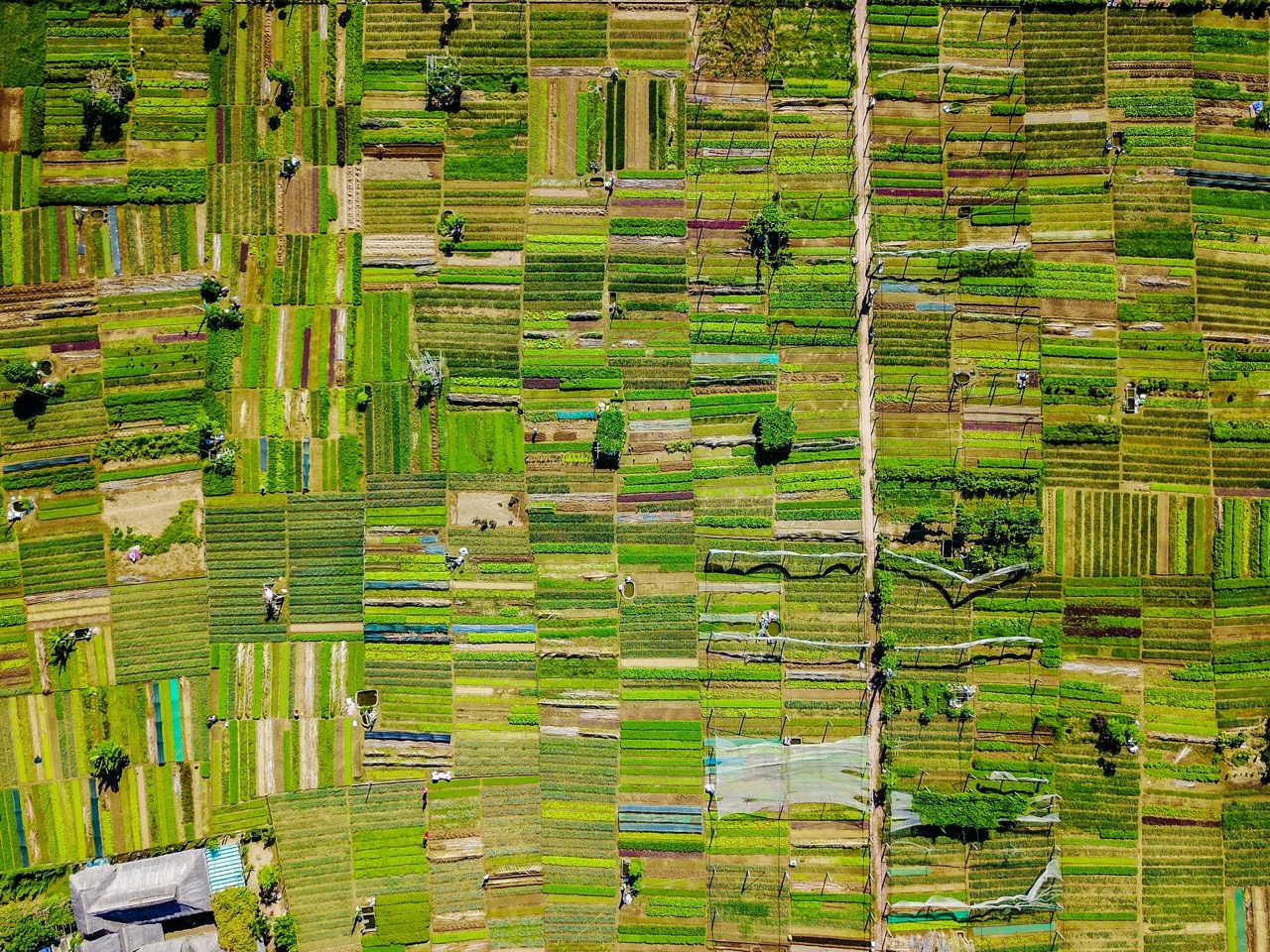Growing up on his family’s ranch in Texas, Mike Meyer is what some might call a ‘progressive farmer.’ His ranch, which has been in his family’s possession since the 1850s, employs various sustainable techniques. “We don’t disc or plow on that range, ever,” he says. “We’ve been doing this sort of conservation and good stewardship on the ranch for over 30 years.” Mike shares an appreciation for the ranch with his daughter Megan, who currently lives on the range as a wrangler.

“If you said that I was a student of agriculture, that is absolutely accurate,” Mike says. Following his passions, he studied Agriculture at Texas A&M University. After graduating in ‘82, he worked for a small agriculture company before settling into the Feeding America network. In the early days of the pandemic, Mike shared a call with James Kanoff (Farmlink’s former co-CEO). They spoke about the disruptions happening across the agricultural space that called for urgent action from organizations like The Farmlink Project. Mike grew interested in our youth-powered mission, saying: “I thought that what they were doing was great. It was fantastic. The rest is history, so to speak.” After nearly ten years in the Feeding America network, Mike joined The Farmlink Project as Head of Farmer Advocacy last fall.
From day to day, Mike’s role comes down to a lot of outreach. “Farmers, I don’t know if we’re interesting or not, but we’re peculiar,” he says. “You only get less than 20 seconds on your initial discussion with a farmer and that’s it, they’re going to move on. Right? It’s like, who is farming? You know, there’s two million farmers in the United States. There’s 49,000 PAC entities. Those are perishable agriculture, commodity agriculture entities that are licensed to trade produce in the United States. And we’re trying to reach them all.”

Looking to the future of agriculture, Mike stresses about the mistakes his generation has made for the younger generations to fix. “I am the last of the Baby Boomers. Without a doubt, the Baby Boomers are the worst generation this country has produced. We are leaving y’all such a polluted planet. We are leaving y’all with such horrific tendencies. And we are leaving y’all with incredible debt.”
“We’ve not made as much progress as we should have made on racial equality. There’s been some horrific things that have occurred in agriculture. And we have displaced hundreds of thousands of black farmers with just the lending practices of the USDA and how that was controlled. We did not reverse that.”
However, Mike strongly believes that the younger generations have the power to repair these damages. “I actually believe that y’all will solve hunger. And I believe that y’all will reverse the direction. I think you will heal this planet,” he says.

< Back
Growing up on his family’s ranch in Texas, Mike Meyer is what some might call a ‘progressive farmer.’ His ranch, which has been in his family’s possession since the 1850s, employs various sustainable techniques. “We don’t disc or plow on that range, ever,” he says. “We’ve been doing this sort of conservation and good stewardship on the ranch for over 30 years.” Mike shares an appreciation for the ranch with his daughter Megan, who currently lives on the range as a wrangler.

“If you said that I was a student of agriculture, that is absolutely accurate,” Mike says. Following his passions, he studied Agriculture at Texas A&M University. After graduating in ‘82, he worked for a small agriculture company before settling into the Feeding America network. In the early days of the pandemic, Mike shared a call with James Kanoff (Farmlink’s former co-CEO). They spoke about the disruptions happening across the agricultural space that called for urgent action from organizations like The Farmlink Project. Mike grew interested in our youth-powered mission, saying: “I thought that what they were doing was great. It was fantastic. The rest is history, so to speak.” After nearly ten years in the Feeding America network, Mike joined The Farmlink Project as Head of Farmer Advocacy last fall.
From day to day, Mike’s role comes down to a lot of outreach. “Farmers, I don’t know if we’re interesting or not, but we’re peculiar,” he says. “You only get less than 20 seconds on your initial discussion with a farmer and that’s it, they’re going to move on. Right? It’s like, who is farming? You know, there’s two million farmers in the United States. There’s 49,000 PAC entities. Those are perishable agriculture, commodity agriculture entities that are licensed to trade produce in the United States. And we’re trying to reach them all.”

Looking to the future of agriculture, Mike stresses about the mistakes his generation has made for the younger generations to fix. “I am the last of the Baby Boomers. Without a doubt, the Baby Boomers are the worst generation this country has produced. We are leaving y’all such a polluted planet. We are leaving y’all with such horrific tendencies. And we are leaving y’all with incredible debt.”
“We’ve not made as much progress as we should have made on racial equality. There’s been some horrific things that have occurred in agriculture. And we have displaced hundreds of thousands of black farmers with just the lending practices of the USDA and how that was controlled. We did not reverse that.”
However, Mike strongly believes that the younger generations have the power to repair these damages. “I actually believe that y’all will solve hunger. And I believe that y’all will reverse the direction. I think you will heal this planet,” he says.

Mike Meyer
Head of Advocacy at The Farmlink Project
Growing up on his family’s ranch in Texas, Mike Meyer is what some might call a ‘progressive farmer.’ His ranch, which has been in his family’s possession since the 1850s, employs various sustainable techniques. “We don’t disc or plow on that range, ever,” he says. “We’ve been doing this sort of conservation and good stewardship on the ranch for over 30 years.” Mike shares an appreciation for the ranch with his daughter Megan, who currently lives on the range as a wrangler.

“If you said that I was a student of agriculture, that is absolutely accurate,” Mike says. Following his passions, he studied Agriculture at Texas A&M University. After graduating in ‘82, he worked for a small agriculture company before settling into the Feeding America network. In the early days of the pandemic, Mike shared a call with James Kanoff (Farmlink’s former co-CEO). They spoke about the disruptions happening across the agricultural space that called for urgent action from organizations like The Farmlink Project. Mike grew interested in our youth-powered mission, saying: “I thought that what they were doing was great. It was fantastic. The rest is history, so to speak.” After nearly ten years in the Feeding America network, Mike joined The Farmlink Project as Head of Farmer Advocacy last fall.
From day to day, Mike’s role comes down to a lot of outreach. “Farmers, I don’t know if we’re interesting or not, but we’re peculiar,” he says. “You only get less than 20 seconds on your initial discussion with a farmer and that’s it, they’re going to move on. Right? It’s like, who is farming? You know, there’s two million farmers in the United States. There’s 49,000 PAC entities. Those are perishable agriculture, commodity agriculture entities that are licensed to trade produce in the United States. And we’re trying to reach them all.”

Looking to the future of agriculture, Mike stresses about the mistakes his generation has made for the younger generations to fix. “I am the last of the Baby Boomers. Without a doubt, the Baby Boomers are the worst generation this country has produced. We are leaving y’all such a polluted planet. We are leaving y’all with such horrific tendencies. And we are leaving y’all with incredible debt.”
“We’ve not made as much progress as we should have made on racial equality. There’s been some horrific things that have occurred in agriculture. And we have displaced hundreds of thousands of black farmers with just the lending practices of the USDA and how that was controlled. We did not reverse that.”
However, Mike strongly believes that the younger generations have the power to repair these damages. “I actually believe that y’all will solve hunger. And I believe that y’all will reverse the direction. I think you will heal this planet,” he says.

.png)







.svg)
.svg)
.svg)